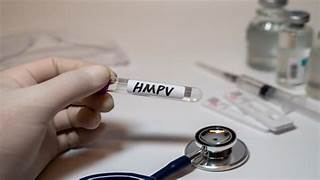Amid HMPV Worry, #Lockdown Trends; Government Says No Need To Panic
As concerns about Human Metapneumovirus (HMPV) rise, the public discourse is becoming increasingly charged. Social media platforms are abuzz with discussions, and hashtags like #HMPV and #Lockdown are trending as anxiety mounts. However, the government has reassured the public that while vigilance is essential, there is no need for panic or extreme measures such as lockdowns at this stage.
This article delves into the situation surrounding HMPV, its implications, the government’s response, and the need for balanced public awareness to navigate this health concern responsibly.
Understanding HMPV: The Virus in Question
HMPV, or Human Metapneumovirus, is a respiratory virus that has been in existence since its discovery in 2001. Part of the Paramyxoviridae family, it causes a spectrum of respiratory illnesses ranging from mild cold-like symptoms to severe conditions such as bronchiolitis and pneumonia. It is particularly concerning for:
- Young children
- Elderly individuals
- Immunocompromised populations
Symptoms of HMPV resemble other respiratory infections and include:
- Cough and runny nose
- Fever and fatigue
- Wheezing and shortness of breath in severe cases
Spread primarily through respiratory droplets, close contact, and contaminated surfaces, HMPV shares transmission characteristics with other respiratory viruses like RSV and influenza.
The Rise in Public Concern
Recent reports of rising HMPV cases have led to widespread public concern, fueled in part by comparisons to past pandemics. Social media has amplified the worry, with hashtags such as #Lockdown and #PandemicPrep gaining traction. Many users, recalling the disruptions caused by COVID-19, are calling for preemptive action to curb the spread of HMPV.
However, experts and government officials emphasize that the current situation does not warrant panic or drastic measures like lockdowns.
Government Response: ‘No Need to Panic’
In response to growing public anxiety, health authorities and government officials have sought to allay fears. Here are the key aspects of the official response:
1. Monitoring and Surveillance
The government has enhanced surveillance efforts to track HMPV cases more effectively. Hospitals and diagnostic centers have been directed to report suspected cases promptly. This approach aims to identify patterns of spread and ensure timely interventions.
2. Public Awareness Campaigns
Educational campaigns are being launched to inform the public about HMPV, its symptoms, and preventive measures. The campaigns stress that HMPV is not a new virus and that most infections are mild, requiring only supportive care.
3. Healthcare Preparedness
Hospitals are being equipped to handle a potential surge in severe respiratory cases. Emphasis is being placed on protecting high-risk populations, such as young children and the elderly.
4. Avoiding Panic Measures
Officials have made it clear that lockdowns or large-scale restrictions are not currently being considered. The focus remains on targeted measures and public cooperation to prevent unnecessary disruptions.
Why Lockdown Trends Are Resurfacing
The resurgence of #Lockdown trends can be attributed to several factors:
- Pandemic Fatigue and PTSD:
The collective memory of COVID-19 lockdowns has left a lasting psychological impact. Any news of a rising infection sparks fear of a repeat scenario. - Social Media Amplification:
Platforms like Twitter and Instagram allow misinformation and fear-mongering to spread rapidly, often outpacing factual information. - Lack of Public Understanding:
Many people conflate HMPV with more severe pandemics due to limited understanding of its nature and impact.
Experts Weigh In
Public health experts agree with the government’s stance, emphasizing the following points:
1. HMPV Is Not New
Unlike emerging pathogens, HMPV has been known for over two decades. Seasonal spikes are typical, and while concerning, they do not indicate an imminent pandemic.
2. Most Cases Are Mild
For the majority of individuals, HMPV infections are mild and self-limiting. Severe cases are largely confined to high-risk groups.
3. Vaccines and Treatments Are in Development
While there is no specific vaccine or antiviral treatment for HMPV yet, research is ongoing. Preventive measures like good hygiene remain effective in controlling its spread.
4. Lockdowns Are Not a Proportional Response
Lockdowns are extreme measures that are usually reserved for highly transmissible and deadly pathogens. Current data on HMPV does not justify such steps.
Steps the Public Can Take
Preventing the spread of HMPV requires a collaborative effort between the government and the public. Here are actionable steps for individuals and communities:
1. Follow Hygiene Practices
- Wash hands frequently with soap and water.
- Use alcohol-based hand sanitizers when soap is unavailable.
- Avoid touching your face, especially your nose, mouth, and eyes.
2. Practice Respiratory Etiquette
- Cover your mouth and nose when coughing or sneezing.
- Dispose of tissues immediately and wash hands afterward.
3. Stay Home When Sick
Avoid going to work, school, or public places if you have symptoms of a respiratory infection.
4. Protect High-Risk Individuals
- Keep young children and elderly family members away from crowded places during seasonal peaks.
- Ensure vaccinations for other respiratory diseases like influenza to reduce overall respiratory illness burden.
Lessons from the Past
The COVID-19 pandemic has reshaped public health responses and societal behavior. While it is essential to remain vigilant, it is equally important to avoid overreactions based on fear rather than evidence. Here are key takeaways:
- Preparedness Without Panic:
Governments and health systems must balance preparedness with measured communication to prevent unnecessary alarm. - Combatting Misinformation:
Timely dissemination of accurate information is crucial to counter fear-mongering on social media. - Strengthening Healthcare Systems:
Investing in healthcare infrastructure ensures resilience against various health crises, not just pandemics.
The Importance of Context
While HMPV is a cause for concern, it is important to view it within the broader context of respiratory illnesses. Seasonal spikes in respiratory viruses are not uncommon, and HMPV is part of this cycle. Public health responses must focus on protecting vulnerable populations without causing widespread disruptions.
Conclusion
The rising awareness of HMPV has sparked discussions and concerns, but it is important to approach the situation with perspective. The government’s reassurances and proactive measures are aimed at managing the issue effectively without unnecessary panic. Public cooperation, informed by accurate information and practical preventive measures, is key to addressing HMPV responsibly.
While #Lockdown trends reflect lingering anxieties, experts and officials emphasize that such extreme measures are not warranted. By fostering awareness, strengthening healthcare systems, and investing in research, we can navigate the challenge of HMPV while maintaining social and economic stability. In the end, vigilance, not panic, remains our best defense.


